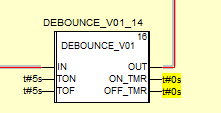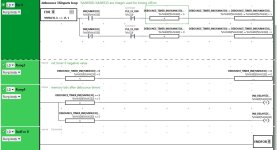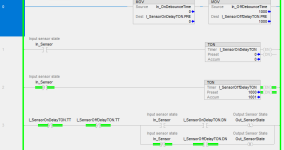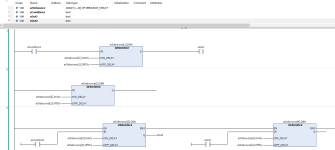dalporto
Lifetime Supporting Member
Hi all.
Is this the simplest way to debounce inputs in Ladder (there are 2 points being debounced here)?
The TOF drives the tag.
I'm expecting a lot of timers doing it this way because I have a lot of those to do.
Building an AOI would result in as much pain as this (tag for each AOI + intermediary tag to write into the AOI input).
Any suggestion on how to make it quicker / cleaner / better?
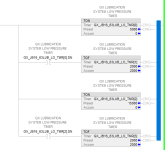
Is this the simplest way to debounce inputs in Ladder (there are 2 points being debounced here)?
The TOF drives the tag.
I'm expecting a lot of timers doing it this way because I have a lot of those to do.
Building an AOI would result in as much pain as this (tag for each AOI + intermediary tag to write into the AOI input).
Any suggestion on how to make it quicker / cleaner / better?






